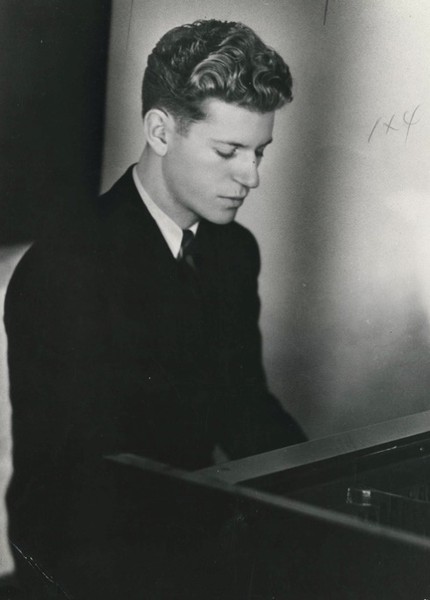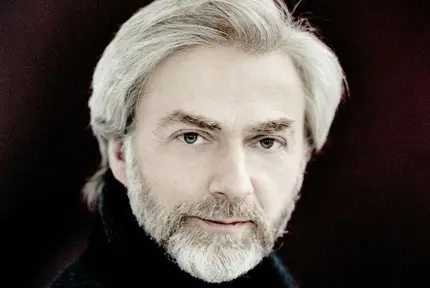
Eugene List |
Eugene List

The event that made the name of Eugene List known to the whole world relates to music only indirectly: this is the historic Potsdam Conference, which took place immediately after the end of the Second World War, in the summer of 1945. American President G. Truman demanded that the command select several artists from the army and send them at his disposal to participate in the gala concert. Among them was the soldier Eugene List. He then performed several small plays, including at the personal request of the President. Waltz (Op. 42) by Chopin; since the young artist did not have time to learn it by heart, he played according to the notes that the president himself turned over. The next day, the name of the pianist soldier appeared in the newspapers of many countries, including in his homeland. However, here this name was known to many music lovers before.
A native of Philadelphia, Eugene Liszt received his first lessons, as often happens, from his mother, an amateur pianist, and from the age of five, having moved to California, he began to seriously study music in the studio of Y. Satro-Sailer. By the age of 12, the boy’s first performance with an orchestra dates back – he played Beethoven’s Third Concerto under the baton of Arthur Rodzinsky. On the advice of the latter, Eugene’s parents took him to New York in 1931 to try to enroll him in the Juilliard School. On the way, we stopped briefly in Philadelphia and found out that a competition for young pianists was about to begin there, the winner of which would receive the right to study with the famous teacher O. Samarova. Yuzhin played, after which he continued his journey to New York. And only there he received a notification that he had become the winner. For several years he studied with Samarova, first in Philadelphia and then in New York, where he moved with his teacher. These years gave the boy a lot, he made noticeable progress, and in 1934 another happy accident lay in wait for him. As the best student, he received the right to perform with the Philadelphia Orchestra, which was then led by L. Stokowski. At first, the program included Schumann’s concerto, but shortly before that day, Stokowski received from the USSR the sheet music of the Young Shostakovich’s First Piano Concerto and he was eager to introduce the audience to it. He asked Liszt to learn this work, and he was on top: the premiere was a triumphant success. Performances in other cities of the country followed, in December of the same 1935, Eugene List made his debut with a Shostakovich concert in New York; this time conducted by Otto Klemperer. After that, the impresario Arthur Jowson took care of the further career of the artist, and very soon he became widely known throughout the country.
By the time he graduated from the Juilliard School, Eugene List already enjoyed a good reputation among American music lovers. But in 1942 he volunteered for the army and after a few months of training he became a soldier. True, then he was assigned to the “entertainment team”, and he traveled from unit to unit, playing the piano installed in the back of a truck. This continued until the end of the war, until the already described events of the summer of 1945. Shortly thereafter, List was demobilized. It seemed that bright prospects opened up before him, especially since his advertising was excellent – even by American standards. After returning to his homeland, he was invited to play in the White House, after which Time magazine called him “the president’s unofficial court pianist.”
In general, everything went pretty smoothly. In 1946, Liszt, together with his wife, violinist Carol Glen, performed at the first Prague Spring Festival, he gave many concerts and acted in films. But it gradually became clear that the hopes placed on him by connoisseurs and admirers were not fully justified. Talent development has clearly slowed down; the pianist lacked a bright individuality, his playing lacked stability, and there was a lack of scale. And gradually, other, brighter artists somewhat pushed Liszt into the background. Pushed back – but not completely overshadowed. He continued to actively give concerts, found his own, previously “virgin” layers of piano music, in which he managed to show the best features of his art – the beauty of sound, improvisational freedom of playing, undeniable artistry. So Liszt did not give up, although the fact that his path was not strewn with roses is also evidenced by such a paradoxical fact: only celebrating the 25th anniversary of his concert activity, the artist first got the opportunity to go on stage at Carnegie Hall.
The American musician regularly performed outside the country, he was well known in Europe, including in the USSR. Since 1962, he has repeatedly been a member of the jury of the Tchaikovsky competitions, performed in Moscow, Leningrad and other cities, recorded on records. The recording of both concertos by D. Shostakovich, made by him in 1974 in Moscow, is one of the highest achievements of the artist. At the same time, the weaknesses of Eugene List did not escape Soviet criticism. Back in 1964, during his first tour, M. Smirnov noted “the stereotyped, inertia of the artist’s musical thinking. His performance plans are in the realm of long-familiar and, unfortunately, not the most interesting concepts.”
Liszt’s repertoire was very diverse. Along with the traditional works of the “standard” set of romantic literature – concertos, sonatas and plays by Beethoven, Brahms, Schumann, Chopin – a significant place in his programs was occupied by Russian music, and above all Tchaikovsky, and from Soviet authors – Shostakovich. Liszt did a lot to draw the attention of listeners to the early examples of American piano music – the works of its founder Alexander Reingal and especially the first American romantic Louis Moreau Gottschalk, whose music he played with a subtle sense of style and era. He recorded and often performed all of Gershwin’s piano works and McDowell’s Second Concerto, was able to refresh his programs with such miniatures of ancient authors as K. Graun’s Gigue or L. Dakan’s pieces, and along with this was the first performer of a number of works by contemporary authors. : Concert by C. Chavez, compositions by E. Vila Lobos, A. Fuleihan, A. Barro, E. Laderman. Finally, together with his wife Y. Liszt performed many significant works for violin and piano, including the previously unknown Sonata by Franz Liszt on a Theme of Chopin.
It was this kind of ingenuity, combined with high erudition, that helped the artist to stay on the surface of concert life, to take his own, albeit modest, but noticeable place in its mainstream. A place that the Polish magazine Rukh Muzychny defined a few years ago as follows: “The American pianist Eugene List is a very interesting artist in general. His game is somewhat uneven, his moods are changeable; he is a little original (especially for our time), knows how to charm the listener with outstanding skill and somewhat old-fashioned charm, can at the same time, for no reason at all, play something strange in general, confuse something, forget something, or simply declare, that he did not have time to prepare the work promised in the program and would play something else. However, this also has its own charm … “. Therefore, meetings with the art of Eugene List invariably brought interesting artistic information to the audience in a fairly high-quality form. Liszt’s pedagogical work was episodic: in 1964-1975 he taught at the Eastman School of Music, and in recent years at New York University.
Grigoriev L., Platek Ya.





